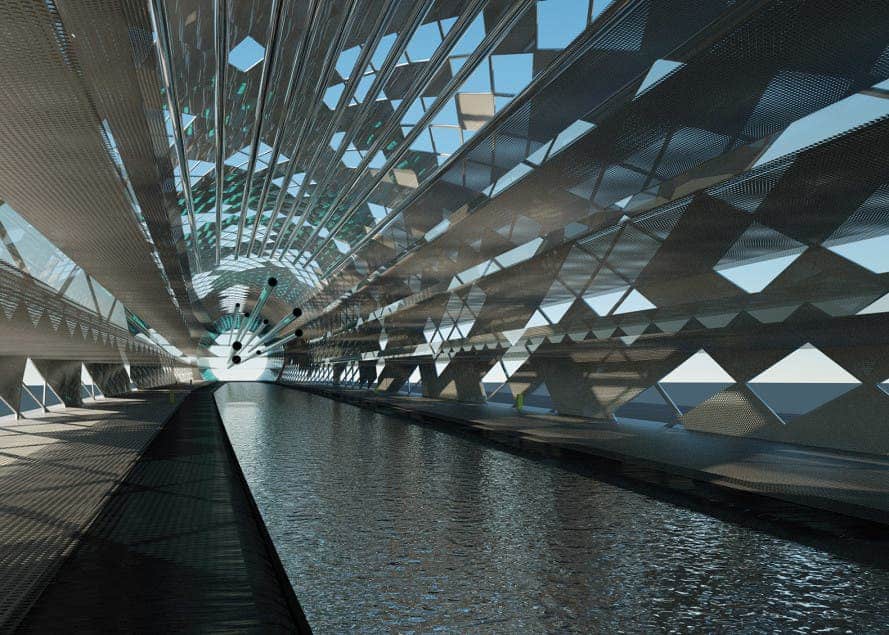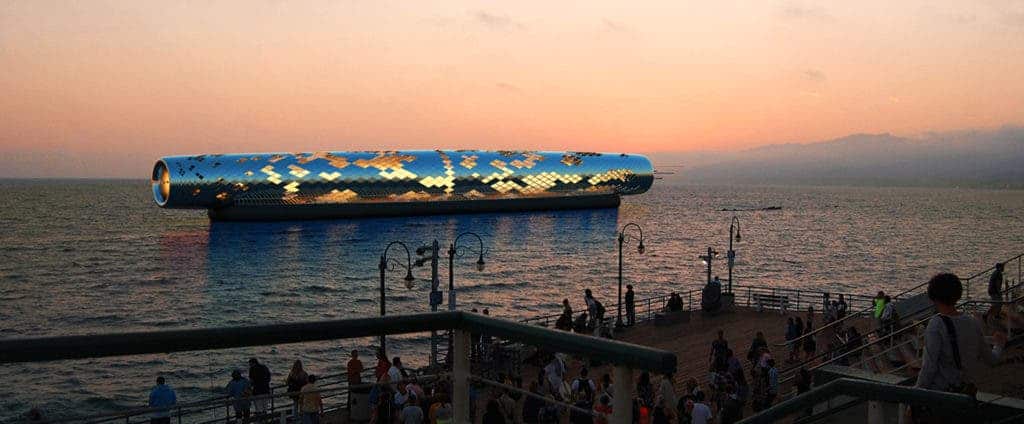
Khalili Engineers from Canada came up with an innovative solution — and a strikingly beautiful one to boot — to California’s growing water shortage problem. Their solution is “The Pipe” — a solar-powered offshore desalination plant that could serve pure drinkable water into the city’s primary water piping.
The company that designed the Pipe say the huge structure would employ electromagnetic desalination, which is a cheaper, simpler method than those currently used in mainstream engineering. The technology, which is only three years old, involves running a voltage through a chip filled with seawater, which then neutralizes chloride ions in the seawater creating “ion depletion zones”. This change in the electric field is sufficient to redirect salts into one branch, allowing desalinated water to pass through the other branch.

To power this process, Khalili engineers claim all the required energy would be supplied by solar panels that can generate 10,000 MWh each year. In turn, the Pipe uses this energy to produce 4.5 billion liters (1.5 billion gallons) of drinking water from the sea, as well as clear water with twelve percent salinity.
“The drinking water is piped to shore, while the salt water supplies the thermal baths before it is redirected back to the ocean through a smart release system, mitigating most of the usual problems associated with returning brine water to the sea,” Khalili Engineers said.
The project is a finalist for this year’s Land Art Generator Initiative, an annual design competition that challenges artists, architects, scientists, landscape architects, engineers, and others to design sustainable solutions to leading environmental problems. The artistic component has to be there too because the organizers believe problem solving can be enhanced with aesthetics.

“The sustainable infrastructure that is required to meet California’s development goals and growing population will have a profound influence on the landscape, ” say Rob Ferry and Elizabeth Monoian, co-founders of the Land Art Generator Initiative, in a press release. “The Paris Climate Accord from COP 21 has united the world around a goal … which will require a massive investment in clean energy infrastructure.”
For now, this project is just a pipe dream, but if there’s interest — and by interest I mean cash — this innovative solution to a very complex problem might one day dock off the shore of some important Californian city.






